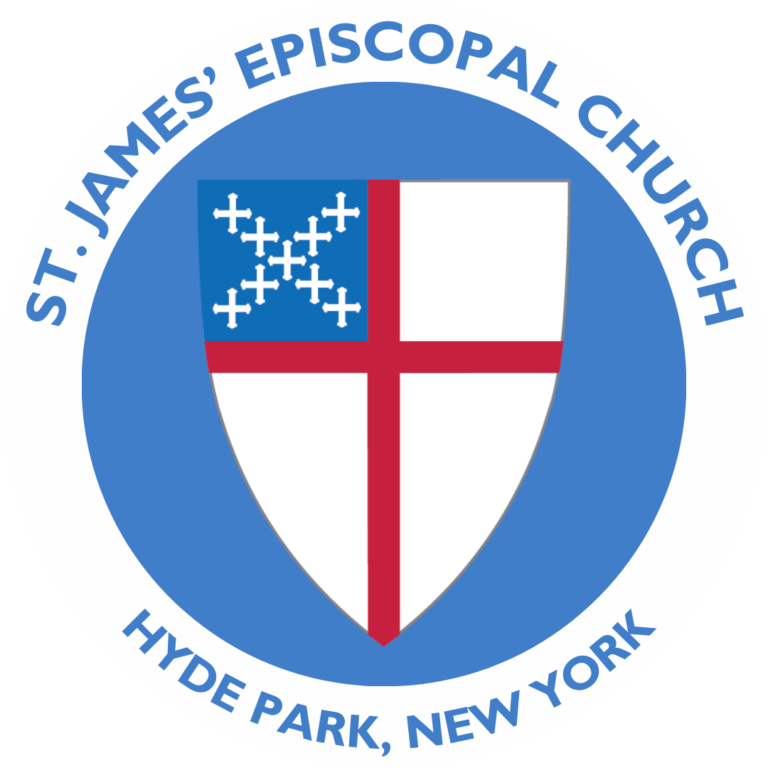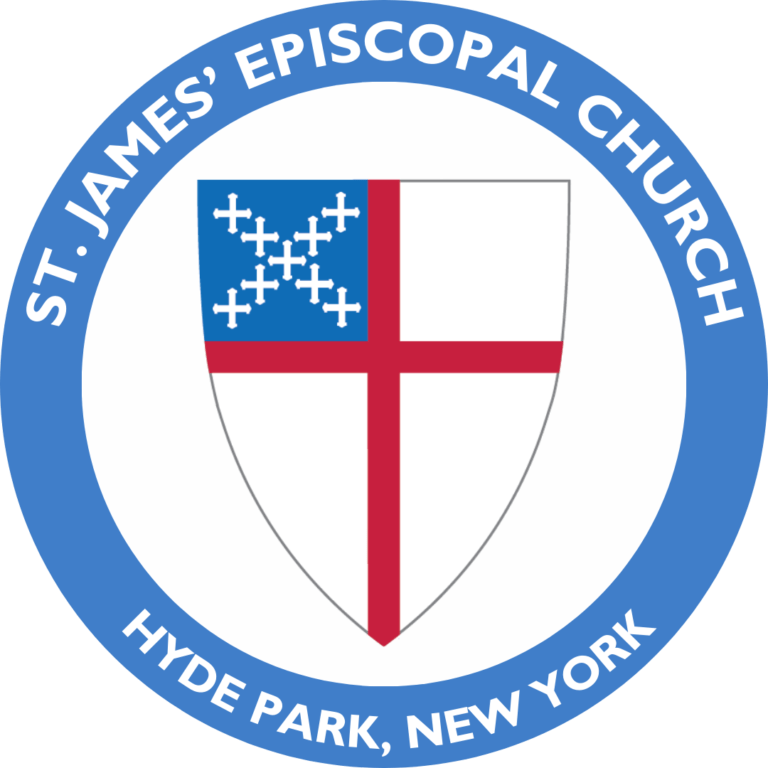By Arnold Kopser, former Parish Historian
Additional material by Dyan Wapnick
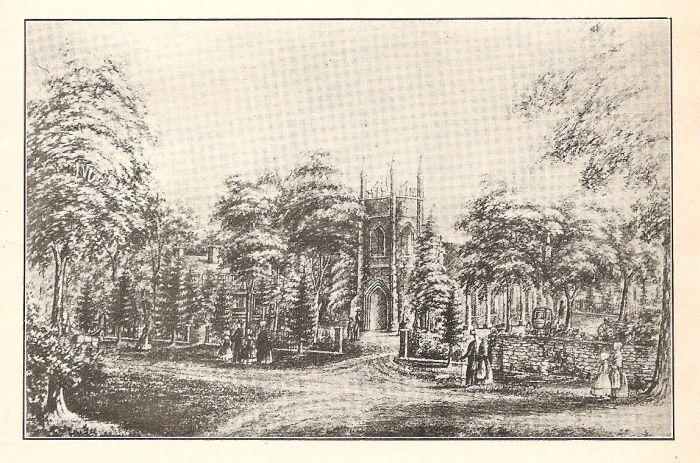
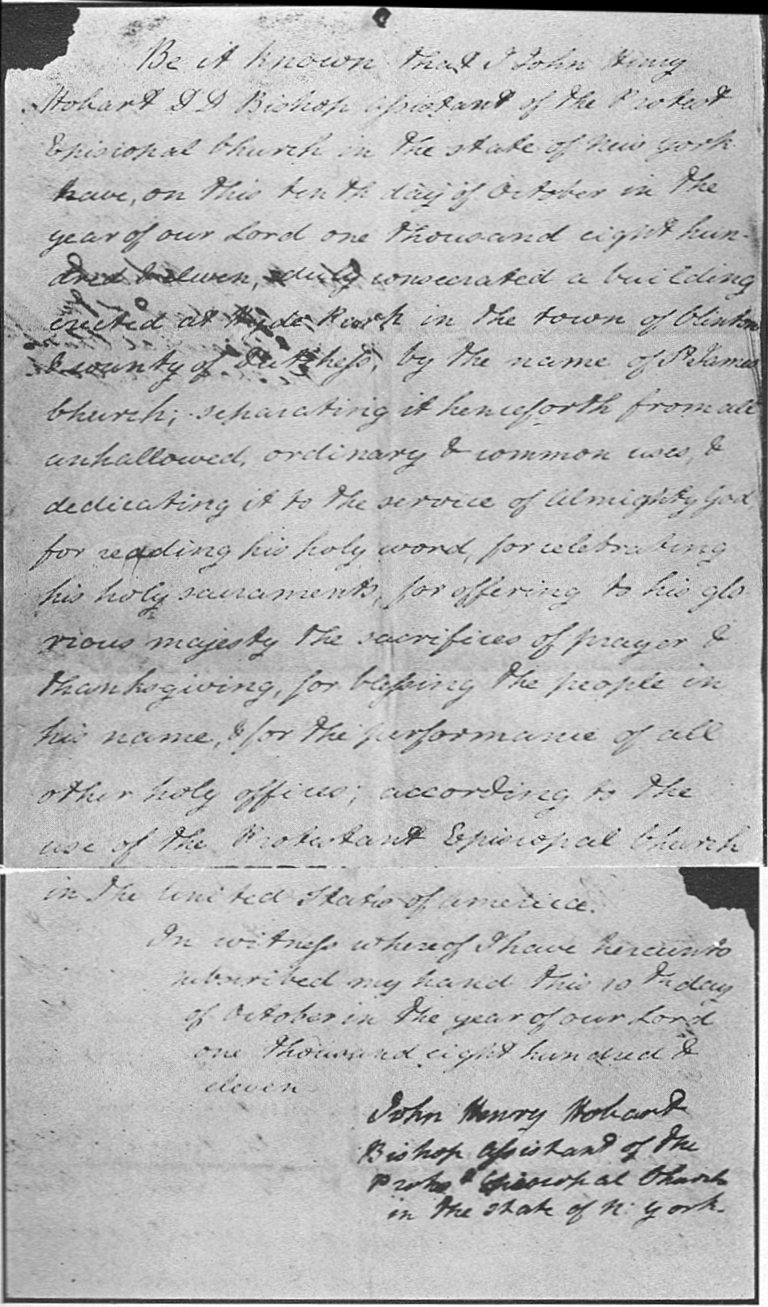
“Be it known that I, John Henry Hobart, D.D., Bishop Assistant of the Protestant Episcopal Church, in the State of New York, have on this tenth day of October, in the year of our Lord, one thousand eight hundred and eleven, duly consecrated a building erected at Hyde Park, in the town of Clinton and County of Dutchess, by the name of S. James Church; separating it henceforth from all unhallowed, ordinary and common uses, and dedicating it to the service of Almighty God, for reading His holy word, for celebrating His holy sacraments, for offering to His glorious majesty the sacrifices of prayer and thanksgiving, for blessing the people in His name, and for the performance of all other holy offices; according to the use of the Protestant Episcopal Church in the United States of America.
In witness whereof, I have hereunder subscribed my hand this 10th day of October, in the year of our Lord, one thousand eight hundred and eleven.”
JOHN HENRY HOBART,
Bishop Assistant of the Protestant Episcopal Church in the State of New York
On the following day Bishop Hobart, “Ordered Deacon in the new church, John McVickar who became the first minister of the congregation.” The first annual meeting of the congregation was held on Easter Monday, March 30, 1812.
The organization of this parish created the only Protestant Episcopal church north of Poughkeepsie and south of Hudson, New York. Here, we had the culmination of many years of planning, efforts and expense to make this happen. The families in the forefront had been: Bard, Barton, Dutton, Hughes, Johnston, Lewis, Livingston, McVickar, Pendleton. Most had been communicants of Old Christ Church in Poughkeepsie located on the northeast corner of Market and Church Streets, present site of the New York State Armory.
The efforts to bring a parish into being at Hyde Park had begun well in advance of the end of the eighteenth century with Dr. John Bard acting as the key figure. He had, around 1770, acquired all of the land held in the Five Partners Patent (a patent was a grant or deed of land issued by the Crown). Identified as being bounded on the west by Hudson’s River, on the south and east by Crum Elbow Creek and on the north by the Rhinebeck Patent, John Bard named the Patent Hyde Park in honor of Edward Hyde, Lord Cornbury the Governor of the Colony of New York. Thus we had Hyde Park.
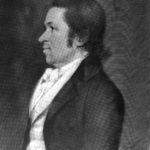
Dr. John Bard died in 1799 and therefore did not live to see the organization of the church. His son, Dr. Samuel Bard, became the leader in the effort of bringing about the new parish. His resolve to this end was manifest in his providing the land needed. The property was just south of Red House, the Bard family home, and included the Bard family burial plot where John Bard was interred. This latter portion became the nucleus of the extensive St. James’ churchyard burial ground.
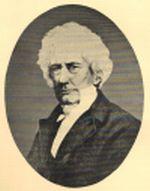
The church was built of brick and stone, stuccoed and painted yellow. It measured 30 feet by 50 feet with a short square battlemented tower at the west end. Records show the cost of the edifice was $2701.75. It was clear of all encumbrances at the time of consecration.
A rectory (no longer standing) was built on church property north of the church and facing south. Preceding rectors had lived in their own homes or in Red House.
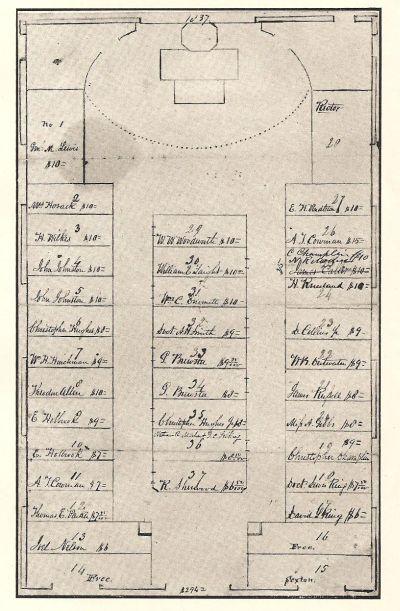
In 1832, the Reverend Samuel Roosevelt Johnson, then Rector of St. James’, caused to be built on his property at East Market Street a frame building for the purpose of providing a children’s school, the bequest of Susan Mary Bard who was a niece of Dr. Samuel Bard. When Reverend Johnson resigned in 1833 he presented the school and property to St. James’ Church. This is Hyde Park’s earliest surviving school.
The Reverend Reuben Sherwood entered upon his duties as Rector in 1835. He would continue in that office until his death in 1856. That twenty-one-year period would be a most eventful time in the life of the young parish.
In 1839, a maintenance inspection of the church revealed the building had structural faults so extensive it was determined the edifice should be replaced. The ailing structure was razed, and a search was begun for designs for a replacement. During this time services were held in the rectory.
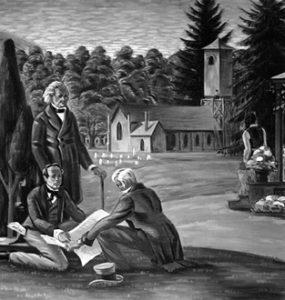
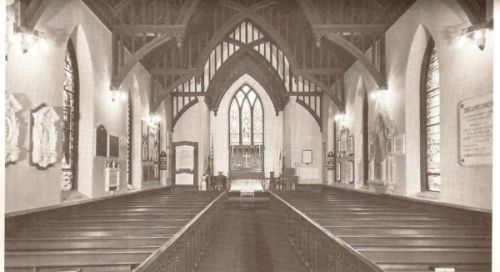
By November 1844, the new church was ready for the first service. The result was that we had a church which was an outstanding example of the Gothic Revival design in America as it existed in the 1840s. With its black walnut ceiling and open-timbered roof support, it was considered one of the finest specimens extant of that discipline in America.
Slavery and the Early Black Presence at St. James’
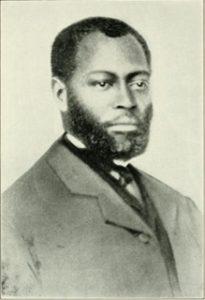 Richard Jenkins was the first recorded sexton of St. James’ Church. A note in the treasurer’s book says he began employment in this position in 1822, and he served until his death on September 14, 1857. The sexton was responsible for the grave digging and the upkeep of the buildings and grounds: Vestry minutes from 1815 set the sexton’s charge for digging a grave and “attending” at 2 dollars.
Richard Jenkins was the first recorded sexton of St. James’ Church. A note in the treasurer’s book says he began employment in this position in 1822, and he served until his death on September 14, 1857. The sexton was responsible for the grave digging and the upkeep of the buildings and grounds: Vestry minutes from 1815 set the sexton’s charge for digging a grave and “attending” at 2 dollars.
It is assumed that Richard had been a slave of Dr. Samuel Bard’s, but we don’t know the circumstances of his manumission. He married Nancy Lewis, who took care of the church linens. Her last name suggests the possibility that she had been a slave of General Morgan Lewis, Governor of New York State — one of the founders of St. James’ and a friend and neighbor of the Bards.
Many of the early leaders of St. James’ were slave owners, and between them comprised a significant number of slaves. Since it was common practice for slave owners to bring their slaves with them to church, these slaves were among the first Black communicants of St. James’. Although it was not initially by choice, many continued to worship here after gaining their freedom.
Beginning around 1790, the Bards had begun selling off or giving away lots to free Blacks, mostly their former slaves, on a rocky outcropping of their estate, about where Hackett Hill Park is today and not far from where St. James’ would be built a little over twenty years later. This grew into a settlement called Guinea. Richard Jenkins relocated here from the landing at Bard Rock, owning a lot where he lived with his family. Such settlements offered an important source of group support to Black families.
It would seem that slavery and the close ties between St. James’ (through the Bards) and Guinea were two things that brought Black families to St. James’.
Another factor was baptism. In his 1913 Historical Notes of St. James Parish, Rev. Edward Newton states that early church records show slaves being baptized at St. James’. The Episcopal Church allowed for the baptism of both slaves and free Blacks, which Reformed traditions did not. This is especially important because for a period of time, due to gradual manumission laws, three degrees of freedom (slave, indentured servant, and free) could co-exist within the same household. Being able to all be baptized ensured that families could obtain salvation together.
Baptisms, confirmations and the registrations of children for Sunday school were all duly recorded, with the designation “colored” the only difference between Black records and those of white communicants. Richard was baptized here in 1829 and confirmed in 1830, and the Sunday school records from 1823-1833 show both Richard and Nancy as pupils along with their children Richard Jr., Charles, Griffin, Henry, and Mary.
Together, Richard and Nancy had twelve children. A son Henry later became a successful barber in Hyde Park. By all accounts, Richard was a much-beloved employee and communicant of St. James’. He was given a family plot in St. James’ Churchyard. Here, Richard, his wife and several of their children are buried among the graves of the founding fathers of St. James’.
Mission Churches
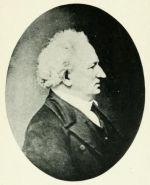
Reverend Sherwood had great interest in the state of the Episcopal Church in Dutchess County. As a part of that interest, he helped organize the Dutchess Convocation in 1848 with other Episcopal churches in Dutchess County to place missionaries in the field locally to further the growth of the Church. He also personally established several mission churches. Two of his efforts were in Staatsburg, four miles north of Hyde Park, and in the Town of Clinton, ten miles to the northeast. Another was in Esopus (West Park), directly across the Hudson River from Hyde Park.
The effort at Clinton progressed well and at some date not now known the mission was organized as a parish called Church of the Holy Apostles. Little is known after that. The parish no longer exists. The last reference to Clinton in St. James’ records is dated October 14, 1849. It posts the baptism of four children conducted by the Reverend S. Davis Mipienay with the notation, “as yet part of the care of St. James, Hyde Park.”
Meanwhile, hardy worshipers from Esopus would travel by ferry across the river to attend services at St. James’. After a ferry accident in which one person drowned, Dr. Sherwood worked to help them establish their own church by serving as a missionary priest and crossing the river weekly to Esopus until their first rector was called in Nov. 1842. This Church of the Ascension also continues to the present day.
The mission at Staatsburgh still lives as St. Margaret’s Church. Dr. Sherwood held services initially in the Postmaster’s home and then in the waiting room of the railway station. The missionary spirit evidenced by Dr. Sherwood continued at Staatsburgh after his death. A frame chapel was built in 1858 and shortly after the work had grown to the extent it became necessary to have a curate in charge.
On April 15, 1882, the mission was organized as a parish and named St. Margaret’s. This “flourishing daughter of St. James’” continued to grow and in 1891 laid the cornerstone for a new stone church. The church was consecrated in 1898 by the Right Reverend Horatio Potter, Bishop of the Diocese of New York.
Through the ensuing years, there has been an affinity between the two parishes. St. James’ has turned to provide assistance when needed. This most recently occurred around 1971-1973 when the associate rector of St. James’ assumed the workload at St. Margaret’s and eventually became the full-time rector.
Reading Room and Chapel
During the 1840s, the Infant’s School on East Market Street increased in function, becoming a Sunday School, a Guild Room and a free reading room. Soon after a circulating library was quartered in a portion of the area, available and “free to all village folk.” This later facility continued as a mission service of the church for several years after the village public library came into being. During this period the building became known as the Reading Room, and by that name it is designated to this day.
In 1857, a chapel was completed at the East Market Street location. Of wood frame construction, it is Swedish Gothic in design. It was placed so the eastern half abuts the south end of the reading room, thereby forming an “L” configuration. This makes for easy access between the two buildings.
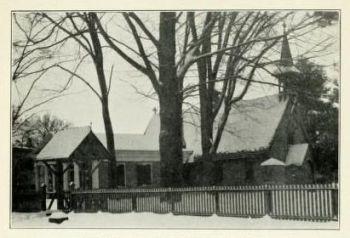
The chapel, by the fact that it was heated while the church was not, became the principal house of worship of St. James’ during the winter months. It remained so for almost a century until 1955 when the church had central heating installed. Until 1998, the chapel was used year- round for early Sunday services (8:00 a.m.).
The Roosevelts
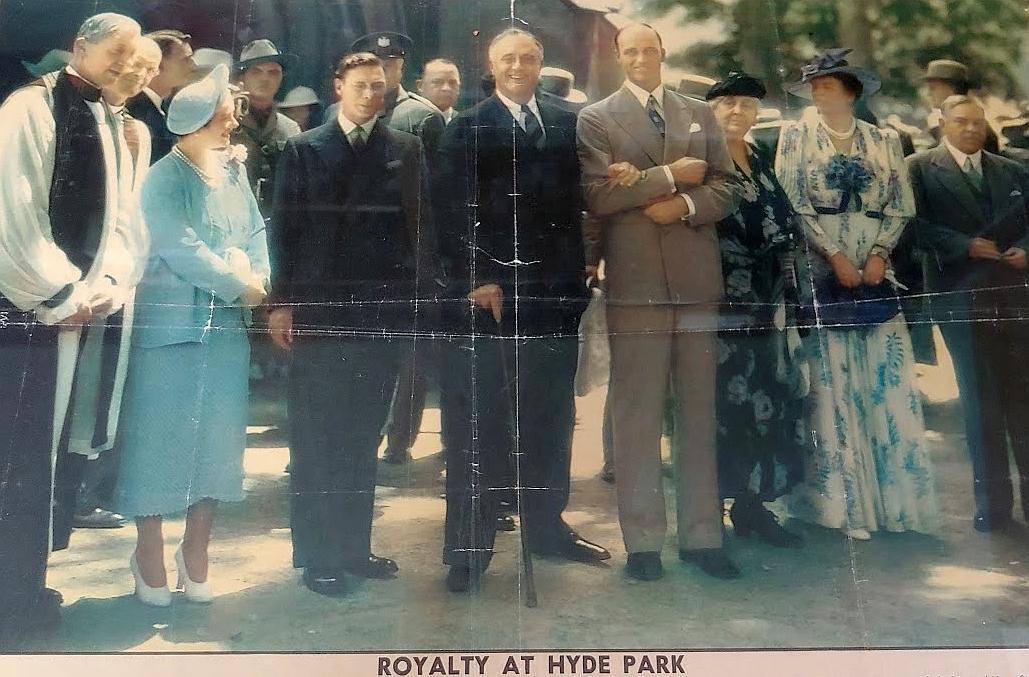
King George VI and Queen Elizabeth of England attend morning services at St. James’ Church with the Roosevelt family, June 11, 1939.
St. James’ Church is perhaps best known through the membership of Hyde Park’s prominent Roosevelt family. The connection with the Roosevelts has placed St. James’ Church at the center of many events of national importance, and makes it a popular destination for tourists, filmmakers, and others.
President Franklin D. Roosevelt and his family worshiped here, and throughout his presidency he remained actively involved in the parish as both Vestryman and Senior Warden. His parents and grandparents, and some of his children and other relatives, are buried here.
Eleanor Roosevelt’s 1962 funeral was attended by President and Mrs. John F. Kennedy and former Presidents Harry S. Truman and Dwight D. Eisenhower, and future President Lyndon B. Johnson.
President and Mrs. Kennedy arrive for Eleanor Roosevelt’s funeral at St. James’ Church on November 10, 1962.

The Post WWII Era
In 1951, St. James’ received a considerable bequest from Mrs. Sylvia Greene Wilks. The church was restored around this time, and the high-peaked roof of the tower was removed, returning the tower to the square battlemented design of the 1811 church (which is what is seen today).
The 1950s was also a period of new construction. First a parish house was constructed just south of the church. It is a large building housing an auditorium with a stage, a kitchen, a formal sitting room, three parish offices, a nursery school classroom, a choir rehearsal hall and eight classrooms. The building was completed and dedicated on November 11, 1956. Construction was started on a new rectory in 1958. The building is located north of the church facing the highway. Completed in 1959, it was occupied by then Rector, the Reverend and Mrs. Gordon L. Kidd.

On June 10, 1984, the church was devastated by a fire of unknown origin. Miraculously, most items in the sacristy and altar area were spared, but the bell, the organ, all but one stained glass window, most of the memorial wall plaques, the carpeting, and many of the pews were lost or damaged beyond repair. The church has since been lovingly and painstakingly restored to its 1844 architectural splendor, blending its former historical character with some contemporary modifications that will aid St. James’ in responding to future needs.
The nominal objective of a parish is to provide a house of worship and a base for the spiritual growth and well-being of the people. Traditionally, St. James’ has done that during the more than two hundred years of its history. In addition, there has always been an objective to keep alive that work that is best known as missionary effort: the effort to help others.
In our early history, this is best exemplified by the efforts led by the Reverend Samuel Roosevelt Johnson (the Infant’s School) and the Reverend Reuben Sherwood (the activity which resulted in the organization of parishes in Staatsburgh, Clinton, and Esopus). In subsequent years we find this spirit manifest in providing public access of the reading room for study, lending library (until 1927), meeting room and for many years as a base for the Hyde Park Food Pantry (storage and distribution of food to the needy). The chapel was also used for worship by St. Timothy’s Lutheran Congregation until their own church was built. In 2010 the chapel and reading room were renovated by parishioners John and Gloria Golden and in 2011, our Bicentennial year, rededicated. The space is rented out to local groups in the community and used by the church for historic and other functions.
In the period of 1969 to 1975 St. James’ provided assistance to the residents of the Rosebud Indian Reservation, South Dakota. Presently we are involved in the Rural and Migrant Ministry, and in cooperation with other area churches the Dutchess County Coalition for the Homeless. The parish also founded and operates an After School Reading Program ministry which pairs elementary school children who struggle with reading with adults who sit with them to read books. Furthermore, the parish house is available to groups for community service, education, health, and self-improvement. The parish underwrites some groups entirely (such as the Boy Scouts) and subsidizes the costs of building use for all not-for-profit groups.
Further Reading:
Historical Notes of Saint James Parish by Edward Newton, 1913
A Domestic Narrative of the Life of Samuel Bard, M.D., by John McVickar, 1822

